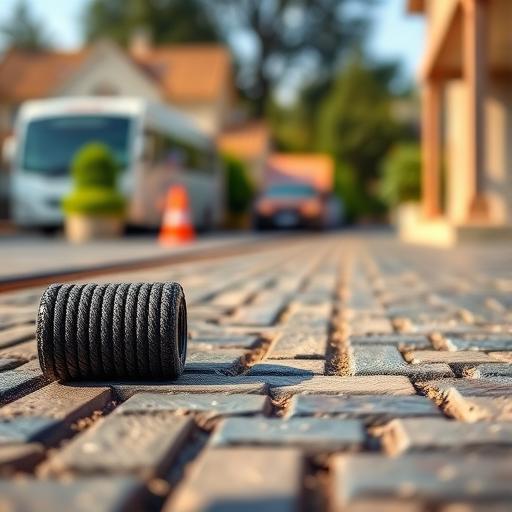Your pool deck is more than just a surface; it’s the heart of your backyard fun! ☀️ It endures constant exposure to the Florida sun, rain, chlorine, salt, and heavy foot traffic. Over time, this wear and tear can lead to fading, cracking, staining, and deterioration of the surface material, whether it’s pavers, concrete, or natural stone. That’s where Pool deck sealing comes in. Applying a quality sealant creates a protective barrier that shields your deck from these harsh elements, significantly extending its lifespan and keeping it looking great.
Spotting the Signs: Is Your Deck Asking for Help? 👀
How do you know if your pool deck is ready for a refresh? Keep an eye out for these tell-tale signs: Water soaking into the surface instead of beading up is a big indicator. You might also notice visible cracks or crumbling sections, particularly on pavers or concrete. Stains from spills, leaves, or algae becoming harder to remove suggest the surface is porous and unprotected. If the color looks faded or washed out compared to covered areas, UV damage is likely occurring. Don’t wait until minor issues become major headaches!
Beyond the Basics: How Sealing Protects Your Investment
Sealing your pool deck offers more than just surface-level protection. It helps prevent the growth of mold, mildew, and algae, which can make surfaces slippery and unsafe. It resists staining from common poolside culprits like sunscreen, food spills, and pool chemicals. A good sealant also enhances the color and appearance of your deck material, bringing back its vibrancy. By keeping water and chemicals from penetrating the surface, sealing also guards against freeze-thaw damage in cooler climates (though less of a concern here! 😉) and helps stabilize paver joints, preventing shifting and weed growth.
The Sealing Journey: A Look at the Process
What happens when you decide to get your pool deck sealed? The process typically begins with a thorough cleaning. This often involves pressure washing to remove dirt, grime, algae, and old sealant residues. Any necessary repairs, like filling cracks or re-sanding paver joints, are done next. Once the deck is clean and completely dry (this part is crucial!), the sealant is applied evenly across the surface. Depending on the type of sealant, multiple coats might be needed. Professional crews have the right equipment and expertise to ensure proper application and coverage, avoiding common issues like bubbling or uneven finish.
Picking the Perfect Protector: Types of Sealants
Not all sealants are created equal! The best choice for your pool deck depends on the material and the desired finish. Acrylic sealants are popular for their ability to enhance color and provide a durable, protective layer. Penetrating sealants sink into the material, offering protection without changing the surface appearance, often used for natural stone. Urethane sealants offer excellent durability and resistance to chemicals and abrasion. There are also specialized sealants for specific materials like concrete or different types of pavers. A professional can help you understand the options and select the one that best suits your deck’s needs and your preferences.
Finding the Right Crew for the Job
Choosing a reliable company for your pool deck sealing makes all the difference. Look for experienced paving and sealing professionals who understand the unique challenges of poolside environments. Check reviews and ask for examples of their work. A good company will assess your specific deck, recommend the appropriate cleaning and sealing methods, and provide a clear estimate. Don’t hesitate to ask questions about the products they use and their warranty. A professional service ensures the job is done right, protecting your investment and giving you peace of mind. ✨
Keeping it Pristine: Maintaining Your Sealed Deck
Once your pool deck is sealed, a little simple maintenance keeps it looking fantastic. Regular sweeping removes debris that can scratch the surface. Occasional washing with a mild cleaner and water is usually sufficient for routine cleaning. Avoid harsh chemicals that could damage the sealant. If you spot spills, clean them up promptly. While sealant provides excellent protection, it’s not invincible. Depending on the sealant type and traffic, reapplication is typically needed every few years to maintain optimal protection and appearance. Think of it as getting a ‘sunscreen’ top-up for your deck! 😎

